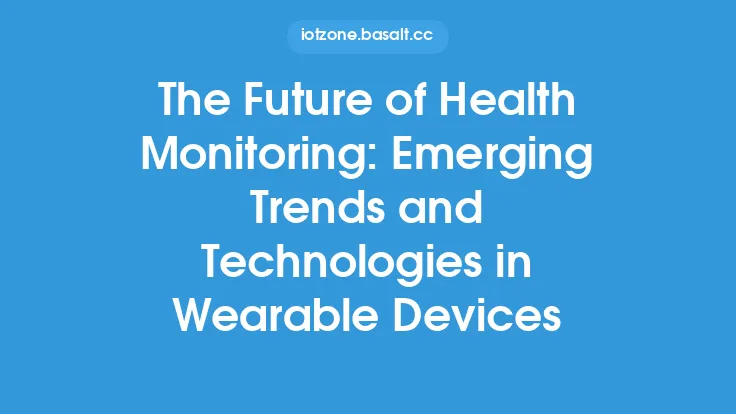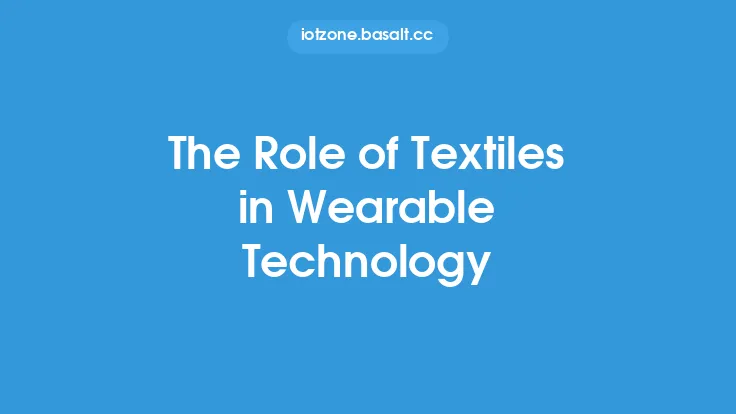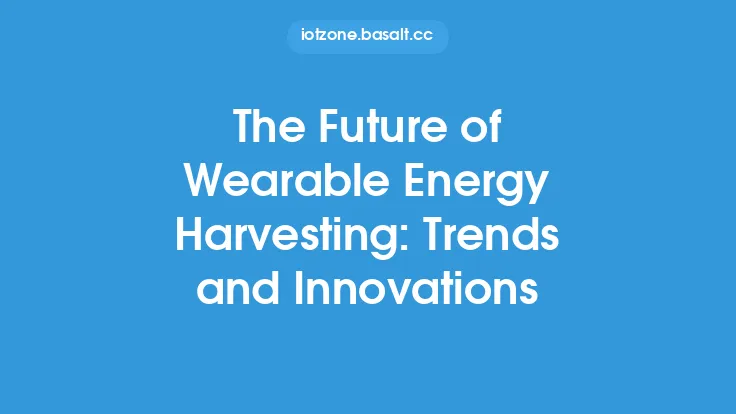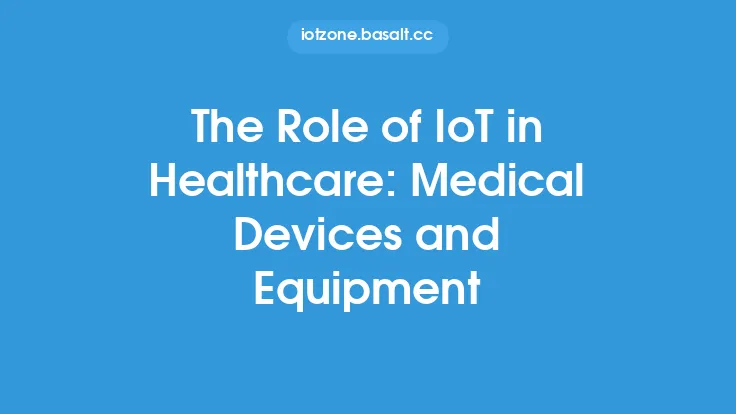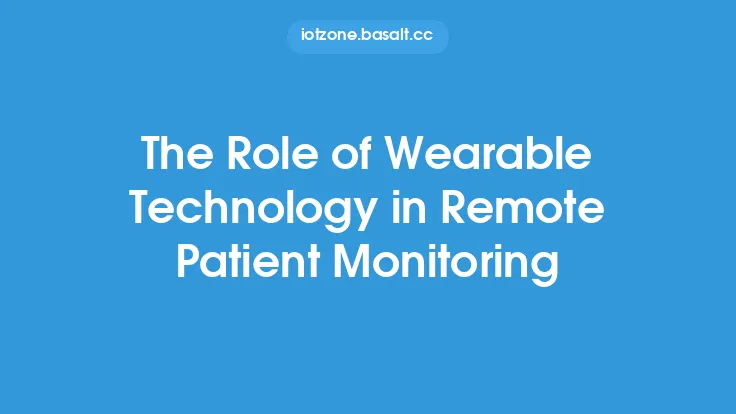The Internet of Things (IoT) has revolutionized the way we live, work, and interact with our surroundings. One of the key drivers of this revolution is the proliferation of wearable devices, which have become an integral part of our daily lives. Wearable devices, such as smartwatches, fitness trackers, and smart glasses, have not only changed the way we perceive and interact with technology but have also opened up new avenues for innovation and exploration. In this article, we will delve into the role of wearable devices in shaping the future of IoT and explore the technical and social implications of this trend.
Technical Overview of Wearable Devices
Wearable devices are essentially small, portable computers that are designed to be worn on the body. They are equipped with a range of sensors, including accelerometers, gyroscopes, and heart rate monitors, which allow them to track various physiological and environmental parameters. These devices are typically connected to the internet via Bluetooth or Wi-Fi, enabling them to transmit and receive data in real-time. The technical architecture of wearable devices is based on a range of protocols and standards, including Bluetooth Low Energy (BLE), Wi-Fi, and Zigbee. These protocols enable wearable devices to communicate with other devices and systems, facilitating the exchange of data and enabling new applications and services.
Role of Wearable Devices in IoT Ecosystems
Wearable devices play a critical role in IoT ecosystems, enabling the collection and analysis of vast amounts of data on human behavior, physiology, and environment. This data can be used to develop new applications and services, such as personalized health and wellness programs, smart home automation, and intelligent transportation systems. Wearable devices can also serve as gateways to other IoT devices, enabling the control and monitoring of smart home devices, vehicles, and other systems. Furthermore, wearable devices can facilitate the development of new business models and revenue streams, such as data analytics and advertising.
Applications of Wearable Devices in IoT
The applications of wearable devices in IoT are diverse and widespread. In the healthcare sector, wearable devices can be used to monitor patient vital signs, track medication adherence, and detect early warning signs of disease. In the fitness and sports sector, wearable devices can be used to track athletic performance, monitor physical activity, and provide personalized coaching and feedback. In the industrial sector, wearable devices can be used to monitor worker safety, track equipment usage, and optimize production processes. Additionally, wearable devices can be used in smart cities to monitor environmental parameters, track traffic flow, and optimize energy consumption.
Challenges and Limitations of Wearable Devices in IoT
Despite the many benefits and applications of wearable devices in IoT, there are several challenges and limitations that need to be addressed. One of the major challenges is the issue of data privacy and security, as wearable devices can collect vast amounts of sensitive personal data. Another challenge is the issue of interoperability, as different wearable devices and systems may use different protocols and standards. Additionally, wearable devices can be prone to technical failures and errors, which can compromise their functionality and reliability. Furthermore, the use of wearable devices can also raise social and ethical concerns, such as the potential for surveillance and monitoring.
Future Directions and Trends
The future of wearable devices in IoT is exciting and rapidly evolving. One of the key trends is the development of new form factors and designs, such as smart clothing and implantable devices. Another trend is the integration of artificial intelligence and machine learning algorithms into wearable devices, enabling them to analyze and interpret data in real-time. Additionally, the use of blockchain and other distributed ledger technologies is expected to become more prevalent, enabling secure and decentralized data exchange. Furthermore, the development of new protocols and standards, such as 5G and Wi-Fi 6, is expected to enable faster and more reliable data transmission, facilitating the growth of IoT ecosystems.
Conclusion and Recommendations
In conclusion, wearable devices play a critical role in shaping the future of IoT, enabling the collection and analysis of vast amounts of data on human behavior, physiology, and environment. While there are several challenges and limitations that need to be addressed, the benefits and applications of wearable devices in IoT are diverse and widespread. To fully realize the potential of wearable devices in IoT, it is essential to address the issues of data privacy and security, interoperability, and technical reliability. Additionally, the development of new form factors and designs, the integration of artificial intelligence and machine learning algorithms, and the use of blockchain and other distributed ledger technologies are expected to drive innovation and growth in the wearable device market. As the IoT ecosystem continues to evolve, it is essential to stay informed and up-to-date on the latest trends and developments in wearable devices and IoT.
